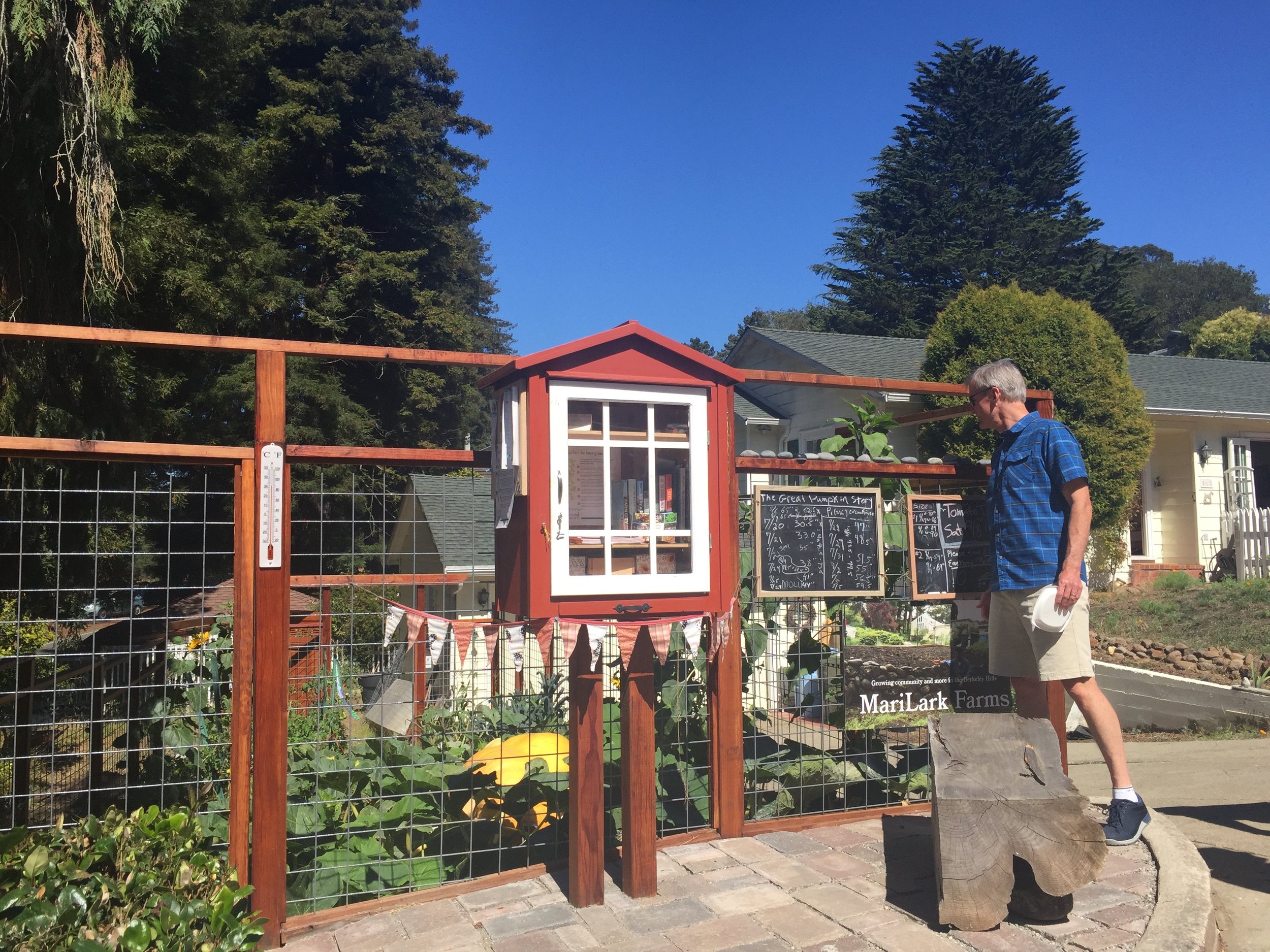My teacher, mentor, and friend Lawrence invited me to go with him to the CRFG scion exchange today, but first, we met at my house and spent some time swapping seeds. This has become a regular event for us; every packet has between 10-100 seeds (depending on the veg/fruit), and no one needs that many, so why not share? This way, everyone gets more variety and everything gets used. Lawrence has quite a collection, some of which are from his personal collection, and some of which are for the classes he teaches at Merritt. You can see the incredible imbalance here, as Lawrence brought three flats whilst I only have one or two little boxes of seed. We have a good time, looking up different varieties, and comparing notes, and our swapping is always capped off by a tour of the garden. Lawrence was particularly impressed with our brassica collection (I’ll share with you in the next week, it’s looking great!) and the alliums. He gives me good advice and we share experiences and I’m so lucky to have developed this friendship with such a learned plantsman (and all-around great guy).
Then we went off to the scion exchange. Holy Moly.
This particular exchange takes place at Diablo Valley College’s horticulture department, in Pleasant Hill. Their greenhouse space is just amazing, and today it was full of scions. This event is sponsored by the California Rare Fruit Growers, who began in 1966 to meet and learn about how to grow fruit in our coastal climate. The way it works is, you pay $5 to enter the event, and then you can pick up as many scions as you need or want, for free. The scions are donated by various growers (and you can bring your own to share), and there is an extremely wide selection.
There were scions from all kinds of fruit trees and canes - there must have been 200 varieties of apple here, and nearly as many of fig, but there were many of every kind of fruit tree you can imagine. The hardest thing about the exchange is figuring out how to mark them so you remember what you brought home. Lawrence spent a good deal of time teaching me how to pick a good scion, which will be helpful for the future.
Do you know what a scion is? It’s a cutting, basically of a young tender branch, which can then be grafted on to an appropriate rootstock and grown out to provide a fruit tree. All fruit trees are created this way; you can see the grafting point between rootstock and cultivar at the base of most of them, about six inches above soil level. This is how you get those monster trees where there are four different kind of apples growing on the same trunk. This can be handy if you have a small space and want a staggered harvest, however, they are difficult to maintain. But also regular fruit trees are grown this way, not from seed. This is why you buy bare-root or potted fruit trees to plant on in your garden. Seed rarely comes true, so they are grafted. This is also called ‘cloning.’
I have not yet learned how to graft, so I didn’t pick up any scions, but I enjoyed being Lawrence’s wing-man, bundling and tagging his choices for his classes. I loved hearing folks sharing information, exchanging ideas on how to grow certain fruits, or which variety was best, or how different varieties grew in different places. All ages filled the greenhouses, from babies in front-carriers to older folks with a lot of experience. It was a real gathering of kindred spirits. Lawrence seems to know everyone, and I even saw several folks I knew from different classes I’ve taken, as well as one of my previous bosses! On this sunny, chilly January day, everyone’s thoughts were tuned hopefully to Spring and Fruit!
Check out the CRFG webpage to see if there is a scion exchange coming up near you. Next year, I’d like to go again, and next time I’ll be more prepared to try out some grafting of my own.















